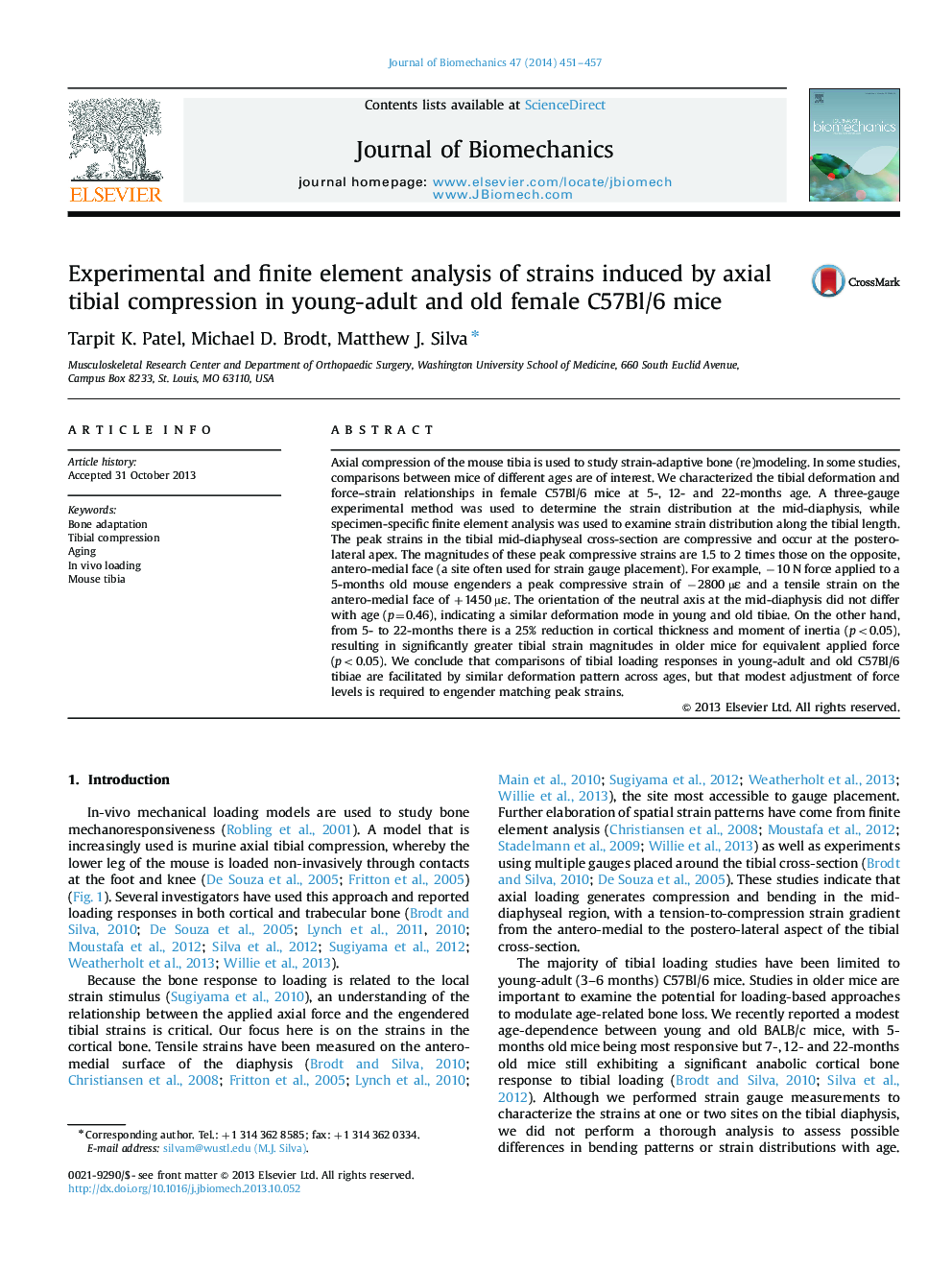| Article ID | Journal | Published Year | Pages | File Type |
|---|---|---|---|---|
| 10431555 | Journal of Biomechanics | 2014 | 7 Pages |
Abstract
Axial compression of the mouse tibia is used to study strain-adaptive bone (re)modeling. In some studies, comparisons between mice of different ages are of interest. We characterized the tibial deformation and force-strain relationships in female C57Bl/6 mice at 5-, 12- and 22-months age. A three-gauge experimental method was used to determine the strain distribution at the mid-diaphysis, while specimen-specific finite element analysis was used to examine strain distribution along the tibial length. The peak strains in the tibial mid-diaphyseal cross-section are compressive and occur at the postero-lateral apex. The magnitudes of these peak compressive strains are 1.5 to 2 times those on the opposite, antero-medial face (a site often used for strain gauge placement). For example, â10 N force applied to a 5-months old mouse engenders a peak compressive strain of â2800 µε and a tensile strain on the antero-medial face of +1450 µε. The orientation of the neutral axis at the mid-diaphysis did not differ with age (p=0.46), indicating a similar deformation mode in young and old tibiae. On the other hand, from 5- to 22-months there is a 25% reduction in cortical thickness and moment of inertia (p<0.05), resulting in significantly greater tibial strain magnitudes in older mice for equivalent applied force (p<0.05). We conclude that comparisons of tibial loading responses in young-adult and old C57Bl/6 tibiae are facilitated by similar deformation pattern across ages, but that modest adjustment of force levels is required to engender matching peak strains.
Related Topics
Physical Sciences and Engineering
Engineering
Biomedical Engineering
Authors
Tarpit K. Patel, Michael D. Brodt, Matthew J. Silva,
